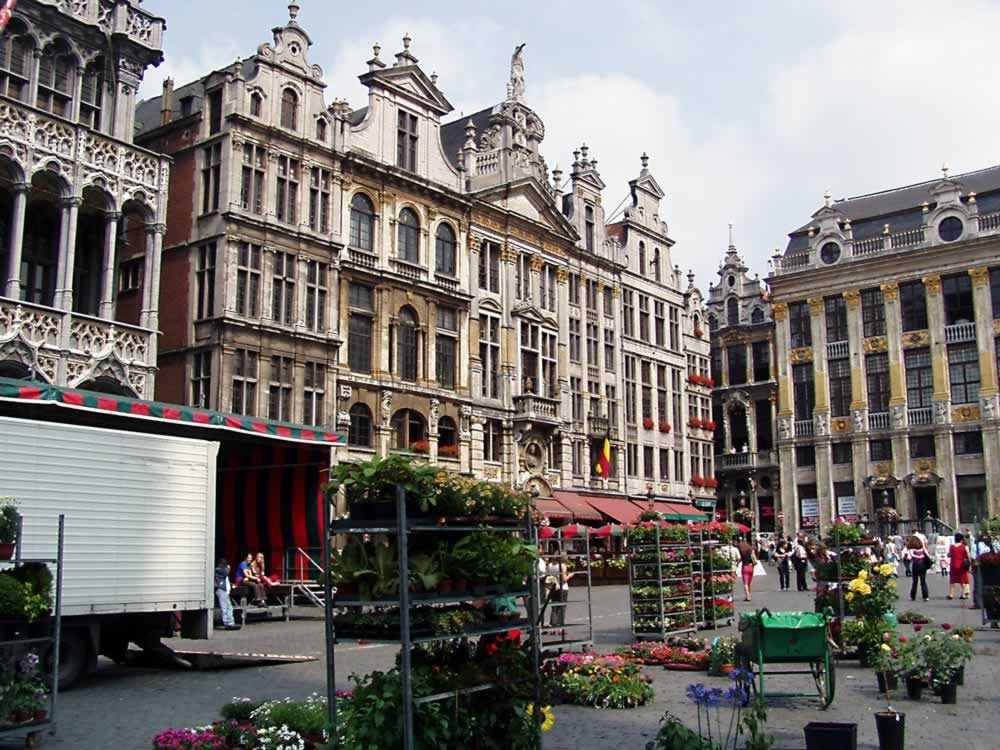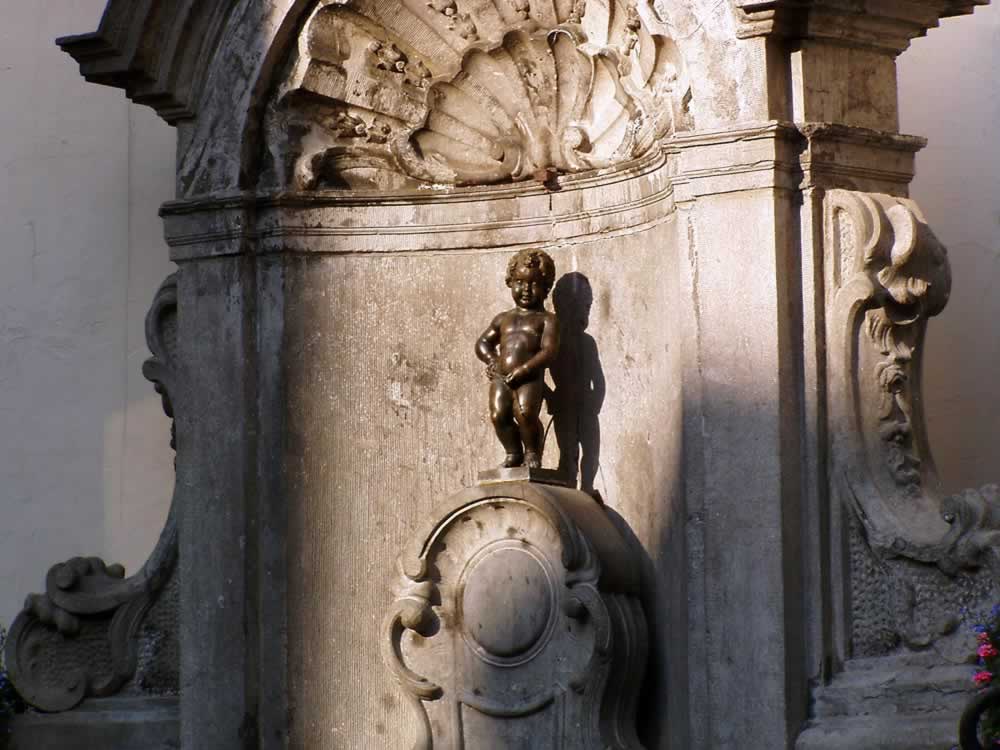Last Updated on: 29th November 2023, 02:19 pm
Brussels is an underrated European capital city that deserves more travelers’ attention. As the headquarters of the European Union, this multicultural melting pot has a lot to offer visitors interested in history, food, beer, art and architecture. If you find yourself having to spend 2 days in Brussels, you’ll want to make the most out of each and every hour.
This 2 day Brussels itinerary will help you maximize your time to see the top attractions and hidden gems. Follow this guide to make the most of your 48 hours in Brussels, Belgium.
Main Topics of 2 Days in Brussels: Easy & Fun Itinerary
Day 1 Morning: Discover the Old Town of Brussels
Begin your first day exploring Brussels’ picturesque Old Town. Chances are your hotel is somewhere in this area, so you’ll be able to start your tour early in the morning.
You’d better check out the best hotels in Brussels to save time and to ensure you’re going to be close to the most important tourist objectives in the city.

Florists in the Grand-Place
La Grande Place – Best Starting Point for your 2 Days in Brussels
Start in the iconic Grand Place, a UNESCO site with intricate medieval guildhalls surrounding the Town Hall.
The Grand Place is the central square of Brussels and the most iconic sight in the city. This UNESCO World Heritage Site dazzles visitors with its ornate medieval buildings, gilded guildhall facades, and elaborate Town Hall.
The origins of La Grande Place date back to the 12th century when vendors gathered here to sell their wares. Over the centuries, opulent guildhalls were constructed around the square to house important trades like the bakers, boatmen, and brewers.

Le Grand-Place – amazing facade
The Belfry Tower
The Belfry tower, located on the north end of the Grand Place, is one of Brussels’ most iconic landmarks. While visiting the Grande Place, climb the steep spiral staircase of the 15th century Belfry tower for panoramic views over the city’s skyline.
This 15th century bell tower rises 96 meters over the square and was formerly part of the cloth hall of the city’s cloth merchants.
Visitors can climb the tower’s 366 spiral stone steps to reach the top and be rewarded with stunning 360 degree views over Brussels. On a clear day, you can see the Koekelberg Basilica, Royal Palace, and other landmarks.
The Belfry has a carillon with 49 bells dating back to the 1600s that chime throughout the day. Make sure to time your visit to hear these melodic chimes ring out over the city.
The Belfry tower is also home to a museum about its history and the Grand Place. Visiting this tower is a must-do when in Brussels to take in panoramas of the ornate medieval square below and greater cityscape.
Access to the Belfry tower in Brussels’ Grand Place is not free. There is an admission fee to enter the tower.
The current ticket prices (as of 2023) are:
- Adult Ticket: €6
- Senior 60+ Ticket: €4
- Child 6-15 Ticket: €3
Tickets can be purchased at the entrance to the Belfry tower. Tickets allow access to climb the 366 steps to the top observation deck as well as visit the carillon bells and the interactive exhibit about the tower’s history.
There are some ways to get discounted or free admission to the Belfry tower:
- Brussels Card holders get free and priority access to the tower.
- Free access on certain holidays like Brussels’ Independence Day (July 21).
- Free for children under 6 years old.
- Discounted rates for groups of 20+ people.
The Gothic Town Hall
The Brussels Town Hall is a stunning Gothic building dating back to the 15th century that dominates the south side of the Grand Place.
Its 300-foot tall tower and dramatic facade of lacy stonework make it a standout structure. The interior is equally impressive, featuring lavish halls with gilt detailing, marble statuary, and massive murals by Victorian artist Auguste Danse.
Don’t miss the ornate Gothic Room, which has an intricately carved ceiling reminiscent of a cathedral. One unique room is the Wooden Room with its walls and ceiling entirely covered in intricately-carved oak paneling.
The Town Hall has served as the seat of municipal government for over 500 years. Visitors can tour parts of the interior as well as visit the basement archaeological site, which reveals foundations from the 13th century. This iconic building exemplifies Brussels’ prosperous medieval past.
There is an admission fee to go inside the building.
The current ticket prices (as of 2023) to visit the Brussels Town Hall are:
- Adult Ticket: €5
- Senior 60+ Ticket: €4
- Youth 12-25 Ticket: €2.50
- Child under 12 Ticket: €1.50
The ticket grants access to tour parts of the interior of the Town Hall including the Gothic Room, the Wooden Room, and some halls.
It also includes entry to the basement archaeological site, which uncovers the foundations of previous buildings on the site dating back to the 13th century.
There are some ways to get discounted or free admission:
- Holders of the Brussels Card get free entry.
- Free access on certain open house days and holidays.
- Discounted rates for groups of 20+ visitors.
Don’t miss going inside the Gothic Town Hall to see its Neo-Gothic interior.

Manneken Pis – the famous little boy from Brussels, Belgium
Manneken Pis
Stroll through the maze of cobblestone alleys to find charming facades, cozy cafes and chocolatiers. The whole area around Grande Place is amazing. It was my favorite part of Brussels.
Stop for a Belgian waffle drizzled in chocolate at an old patisserie. Make sure to also pass the famous Manneken Pis statue, depicting a little boy relieving himself into a fountain.
Legends about this little boy teach us that the boy urinated on the fuse of an explosive load, thus saving the city from a siege.
Spend time visiting Gothic sites like Brussels Cathedral, Cathedral of St. Michael and St. Gudula, and the Notre Dame du Sablon Church.
Day 1 Afternoon: Marvel at Art Nouveau
In the afternoon, explore Brussels’ Art Nouveau architectural legacy. Admire elegant townhouses designed by Victor Horta, the pioneer of the style, in the Ixelles neighborhood.
Then head to the Horta Museum, situated in Horta’s former home and workshop. This preserved interior showcases ornate decor in the Art Nouveau aesthetic.
End your afternoon at the Magritte Museum, which houses the surrealist works of Belgium’s famous painter Rene Magritte. See his iconic pieces like The Son of Man and The Treachery of Images.
Day 1 Evening: Indulge in Food & Belgian Beer
Spend your first evening indulging in Belgian specialties, as Brussels is renowned as a foodie city. Savor melt-in-your-mouth pralines from luxury chocolate shops like Neuhaus, Godiva and Leonidas.
Pair your chocolate with Trappist beers and classic moules-frites (mussels and fries) at a local brasserie. Nightcap your dinner at the Delirium Cafe, which boasts a whopping 2,000 types of beers.
Day 2 Morning: Explore Quirky Museums
Begin your second day visiting some of Brussels’ quirkier museums.
The Comic Book Route
Marvel at the 374 steps of the Comic Book Route, showcasing colorful street art and murals.
The Comic Book Route is a fun open-air attraction celebrating the city’s prolific comic artists through colorful murals and street art.
The route spans over 2 miles in downtown Brussels and contains over 50 separate comic murals and statues. Some of the works depict iconic Belgian comic characters like Tintin, The Smurfs, and Lucky Luke. Others showcase Brussels scenes and the comic artists behind them like Hergé (creator of Tintin).
One highlight is the imposing 374 step Comic Book Stairway featuring comic panels ascending the stairs.
There are multiple mapped out routes to explore the Comic Book Route from central squares like Grand Place and Place du Jeu de Balle. Fans of comics and vibrant street art will enjoy hunting for these animated murals and immortalized characters throughout the urban streets of Brussels.
The Musical Instruments Museum
he Musical Instruments Museum (MIM) is a one-of-a-kind institution showcasing over 8,000 instruments from the 1500s until today.
Located just north of the city center, the modernist building designed by architect Michel Jacques contains vast collections spanning 5 floors.
Displays range from delicate early instruments like lutes, harpsichords, and player pianos to modern rock ‘n roll relics like guitars, drums, and synthesizers. There are rooms organized by region, like Asia and Africa, highlighting diverse global music traditions. Don’t miss the Self-Playing Instruments using technology like pneumatics and electronics to emulate live musicians.
The displays feature audio, video, and multimedia so visitors can listen to the sounds of many rare instruments.
The unique Musical Instruments Museum has exhibits spanning 15th century lutes to rock ‘n roll relics. The MIM’s sheer breadth of exhibits makes it an essential visit for music lovers and the musically-curious visiting Brussels.
The Bourse Museum
Housed in Brussels’ former stock exchange building, the Bourse Museum offers a unique glimpse into the world of Belgian finance and commerce.
The grand neoclassical structure was built in 1873 to serve as the city’s stock exchange. Today, the preserved trading floor provides context on the history of the Brussels Stock Exchange from its beginnings in the 1500s. Exhibits display historical financial documents like old share certificates, bank notes, bonds, and ledgers.
The museum collection contains over 15,000 artifacts illustrating economic development in Belgium over centuries. You can view the earliest forms of money, tools used in banking, and amusing satirical artwork lampooning greed and speculation.
An interesting exhibit spotlights the ‘Financial Belle Epoque’ era of industrial prosperity in the late 1800s.
For those interested in economics and commerce, the Bourse Museum offers an engaging experience right in the heart of Brussels’ bustling commercial district.

The Atomium – the weather wasn’t the best, it was misty and the sky was dull
Day 2 Afternoon: See the Atomium & Mini-Europe
In the afternoon, head north of downtown Brussels to see the Atomium, a 165-billion-times enlarged model of an iron atom built for the 1958 World Fair. Its futuristic spheres provide lovely panoramas across the city.
Next door is Mini-Europe, an outdoor park exhibiting nearly 350 miniature models of European landmarks at a 1:25 scale. You can view sites like the Eiffel Tower, Big Ben and the Berlin Wall in an afternoon.
You can find out more details about all of these from my other article about things to see and do in Brussels.

Mini Europe buildings with people in the background for comparison
Day 2 Evening: Farewell Dinner
On your final night in Brussels, enjoy a flavorsome farewell dinner.
For haute Belgian cuisine, book a table at restaurants like Comme Chez Soi or Sea Grill. Or opt for more casual yet delicious bistro-style options like Restobières and À La Mort Subite.
Complete your 48 hours in Brussels feeling enthralled by this diverse, multicultural and historic capital filled with character. What were your favorite spots and hidden gems? Share and compare notes with fellow travelers!
- Dingli Cliffs: How To Visit Malta’s Highest Point - April 24, 2024
- Blue Grotto Malta - April 23, 2024
- Ramla Beach Gozo, Maybe the Best in Malta - April 9, 2024

